Our planet is 70% covered with water, of which more than 96% are oceans. This means that most of the water on Earth is salty. What is water salinity? How is it determined and what does it depend on? Can such water be used on the farm? Let's try to answer these questions.
What is water salinity?
Most of the water on the planet has salinity. It is commonly called seawater and is found in oceans, seas and some lakes. The rest is fresh, its amount on Earth is less than 4%. Before you figure out what the salinity of water is, you need to understand what salt is.
If you think the sea is the saltiest place on Earth, you are mostly right. Water makes up more than two-thirds of the surface of our planet, and 96% of the Earth's water is in the ocean. It contains thousands of billions of tons of dissolved salt. Around the poles, snow and ice dilute the salt, and closer to the equator, the water is saltier.
But there are places on our planet where you can find water that is much saltier than the sea. Few are more famous than the Dead Sea, located on the borders of Jordan and Israel. The water here is about 10 times saltier than sea water. However, it is only the fifth salt water body on Earth.
Salts are complex substances that consist of cations (positively charged ions) of metals and anions (negatively charged ions) of acidic bases. Lomonosov defined them as "fragile bodies that can dissolve in water." Many substances are dissolved in seawater. It contains sulfates, nitrates, phosphates, sodium, magnesium, rubidium, potassium cations, etc. Together, these substances are referred to as salts.
The waters of Don Juan Pond in Antarctica are 44% saline. Although the word "sea" is used loosely enough, it actually denotes a large amount of salt water, which is partially enclosed by land. The Dead Sea is completely closed, so it is actually a lake. Salinity is confusing.
The rocks at the water's edge sparkle with crystallized sodium chloride, where the sun evaporates the water. Its location on the edge of the Great Lakes is the key to its productivity. These are the remains of a prehistoric sea about 420 million years ago. Large deposits in places like Africa and Asia may not be as well known.
So what is water salinity? This is the content of substances dissolved in it. It is measured in thousandths - ppm, which are denoted by a special symbol -% o. Permille defines the number of grams in one kilogram of water.
What determines the salinity of water?
In different parts of the hydrosphere and even in different times the salinity of the water is not the same. It changes under the influence of several factors:
Europe also has an impressive mineral reserve. The area stretches from northern Britain, across the North Sea through the Netherlands, Denmark, Germany and Poland. People western world have been looking for these valuable salt deposits for hundreds of years. However, we may have missed some of the biggest ones.
Characteristics of the oceanic aquatic environment
Much of the attention over the centuries has been on identifying deposits in Europe and North America, therefore large deposits places like Africa and Asia may not be as famous, says Bohlen. The problem is that most of the information on the largest tanning bed is focused on mines.
- evaporation;
- ice formation;
- precipitation;
- melting ice;
- river runoff;
- currents.
When water evaporates from the surface of the oceans, salts remain and do not erode. As a result, their concentration increases. The freezing process has a similar effect. Glaciers contain the largest supply of fresh water on the planet. During their formation, the salinity of the waters of the World Ocean increases.
What determines the salinity of water?
Perhaps unsurprisingly, it is Russia, the world's largest country by land mass, that is home to the world's largest "salt giants." These are huge, evaporated remnants of ancient seas locked underground. In general, we know a lot about the deposits of our planet. However, since the focus of research is often strongly linked to the economic value of salt, it is difficult to find a completely salty spot.
Large crystal deposits are known all over the world. On this moment The best we can do is say that the saltiest place on Earth is possibly a small pond in Antarctica or under a remote region of Russia. But it may be in another place that no one has thought of yet.
The melting of glaciers is characterized by the opposite effect, decreasing the salt content. In addition to them, the source of fresh water is precipitation and rivers flowing into the ocean. The salt level also depends on the depth and nature of the currents.
Their greatest concentration is on the surface. The closer to the bottom, the less salinity. Warm currents affect the salt content in a positive direction, cold currents, on the contrary, reduce it.
Properties and significance of sea water
Throughout the recorded history, the person really wanted to understand his environment and environment... Science was born from these observations of natural world... One of the most important issues raised about the world. Over time, many different methods of getting to know the Earth have been attempted, most of which have failed. One such unfortunate dating technique is to determine the current salt content of the ocean to create a timeline to determine how long it has been in existence. This method was introduced almost 300 years ago and it was researched by many prominent scientists for several hundred years until it got out of control due to obvious flaws in the method.
Salinity of the World Ocean
What is salinity sea water? We already know that it is far from the same in different parts of the planet. Its performance depends on geographic latitudes, climatic features of the area, proximity to river objects, etc.
The average salinity of the waters of the World Ocean is 35 ppm. The colder regions near the Arctic and Antarctic are characterized by a lower concentration of substances. Although in winter, when ice forms, the amount of salt increases.
To understand how effective dating methods work, one must investigate invalid methods, such as sea salt watches, and know why and how they are ineffective. You also need to know the history of the method and how it came to be. One very handy aspect of this method is that measuring salt in the oceans is quite simple due to its abundance. If one cubic foot of seawater evaporates, this will yield approximately 2 pounds of salt. The relatively simple method of measuring salt, along with its abundance, makes it a very attractive dating method for some.
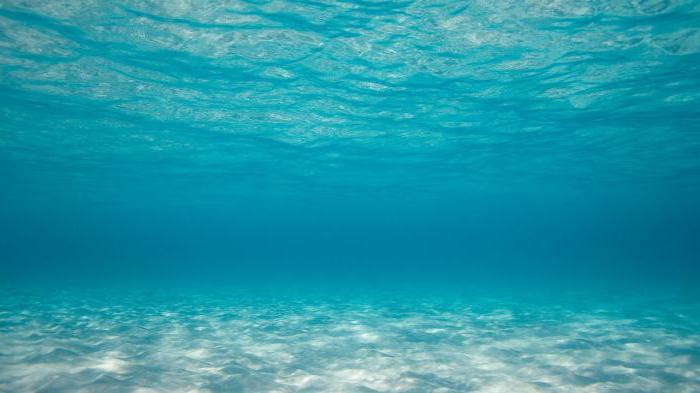
For the same reason, the least salty ocean is the Arctic Ocean (32% about). The highest content is noted Indian Ocean... It covers the area of the Red Sea and the Persian Gulf, as well as the southern tropical belt where salinity is up to 36 ppm.
Before you start measuring the salinity of the oceans, you must first understand exactly why the oceans contain salt and how it gets there. When rain falls on the ground, it picks up small granules of dirt and minerals, some of which dissolve in the water itself. When water returns to the ocean, it contains a large volume of dissolved minerals, many of which are salt. What makes the ocean salty is that when water evaporates from the ocean, it leaves its supply of dissolved salt behind and becomes fresh.
Then, when the water condenses into rain, the cycle starts over and brings more salt to the oceans. The table below shows the cycle of how salt is transported from land to oceans. In theory, in a closed system, measuring the salt content of the water would work to calculate the approximate age. Imagine an initially fresh piece of water to which salt is continuously added. If a somewhat constant rate of salt accumulation is known, and the actual amount of salt in the water is known, then a simple algebraic calculation will give the age of that particular body of water.
Quiet and Atlantic oceans have approximately the same concentration of substances. Their salinity decreases in equatorial zone and rises in subtropical and tropical regions. Some are warm and balance each other. For example, not salty Gulf Stream and salty Labrador in the Atlantic Ocean.
Salinity of lakes and seas
Most of the lakes on the planet are fresh, as they are fed mainly by precipitation. This does not mean that there are no salts in them at all, it is just that their content is extremely small. If the amount of dissolved substances exceeds one ppm, then the lake is considered saline or mineral. The Caspian Sea has a record value (13% o). The biggest fresh lake- Baikal.
This is what many people have tried to do over the years. Edmund Galli first turned to the method of studying ocean salinity in the astronomer Halley, who was the first real proponent of using a salt clock to calculate the age of the Earth. He was the first to notice that the oceans and some lakes are fed by streams and therefore constantly received more salt. However, Halley could not test his theories because he previously needed to know the salt content of the oceans in order to calculate the rate of accumulation.
Mellard Read reviewed this process and renamed it Chemical Denudation. Read came up with the calculation that calcium and magnesium sulfates would take 25 million years to reach their current concentrations in the oceans. Others have tried a method that gives similar dates. John Jolie calculated the age of 4 million years in Ten years later, Jolie revised her equations and calculated the age between 80 and 150 million years.
The salt concentration depends on how the water leaves the lake. Fresh water bodies are flowing, while more salty ones are closed and subject to evaporation. The determining factor is also the rocks on which the lakes were formed. So, in the area of the Canadian Shield, rocks are poorly soluble in water, and therefore the reservoirs there are "clean".

The dates calculated by everyone who tried this method were incorrect due to several fundamental flaws in the system. First of all, in order to use the salt clock as an actual clock, you must assume that the starting point will be 0% salinity. This, of course, could never be known, because no one was going to measure the salinity of the oceans when they were forming. In addition, people assumed that the ocean is an eternal reservoir, and when salt is dumped into the ocean, it remains there permanently.
Legends and scientific facts about the salinity of the seas
This assumption is incorrect, since it was later proven that the elements of the ocean are constantly being recycled and leaving the water. As plate tectonics shapes our Earth, sea layers rise and evaporate, leaving large salt deposits. The subduction of oceanic plates and melting to Earth, causing volcanoes to erupt, erupt material containing salt, which turns into earth, which then begins the process over and over again.
The seas are connected to the oceans through the straits. Their salinity is slightly different and affects the average. ocean waters... Thus, the concentration of substances in the Mediterranean Sea is 39% and is reflected in the Atlantic. The Red Sea, with an indicator of 41% o, raises the average significantly. The most salty is the Dead Sea, in which the concentration of substances is from 300 to 350% o.
The earth, including the salt in the ocean, is in a constant state of flow on a very large cycle. In fact, the amount of salt lost from the ocean and the amount it receives are about the same. This means that the salinity of the World Ocean does not gradually increase or even changes greatly, but is actually in a state of equilibrium. Another fundamental disadvantage of this system is that the rates of erosion, dissolution, precipitation and runoff cannot be measured over a large amount of geological time.
They just vary too much to give any constant. Also, the fact that different elements tend to spend different amounts of time in the ocean adds to the computational confusion. For a process to be considered a good natural hour, it must contain the following: a known initial condition, an irreversible process, a uniform rate, and an end condition. With a salt clock, the initial condition is unknown. The salt accumulation process has been shown to be reversible and permanent.
Properties and significance of sea water
Salt water is not suitable for economic activity... It is not suitable for drinking and watering plants. However, many organisms have long been adapted to life in it. Moreover, they are very sensitive to changes in the level of its salinity. Based on this, organisms are divided into freshwater and marine.
There is also no uniform rate of salt accumulation. The only criterion is the known end condition. Because of these factors, the salt clock obviously cannot be used as a natural clock for calculating any type of age. Despite the well-known scientific reasons why this method cannot be used as an accurate natural clock, ocean salinity measurements have recently been used by Earth's young creationists as supposed proof that the Earth is not actually billions of years old.
On the Answers website in Genesis, a young earth proponent actually explains that the clock is salt as a valid measuring device. According to the website, many processes bring salt into the sea and they do not leave the sea easily. Thus, the salinity is steadily increasing. Since we can determine how much salt is in the sea, as well as the rate at which salts enter and leave the sea, we must be able to calculate the maximum age for the sea. What's even more interesting about this featured article is that the author even cites the work of John Jolie and Edmund Haley in his references.

Thus, many animals and plants living in the oceans cannot live in the fresh water of rivers and lakes. Edible mussels, crabs, jellyfish, dolphins, whales, sharks and other animals are exclusively marine.
For drinking man uses fresh water. Salty is used for medicinal purposes. In small quantities, water with sea salt is used to restore the body. The therapeutic effect is produced by bathing and taking baths in seawater.
The work of Jolie and Haley, vital to tracking the development of scientific thought in the Earth Age, is in no way flowing or uplifting to this day. Still trying to use a failed method like the salt watch, as a legitimate science, takes a step back in science. It would be tantamount to firing all modern medicine and returning to bleeding people for just about any ailment they could reduce.
This method of acquaintance with the earth, no matter how lagging it may seem by today's standards, is nevertheless an important step in the history of science. If it were not for trial and error like this method, it would have been impossible to arrive at the sound scientific methods and methods used today. This method is important because it showed critical thinking on the part of a person, because he tried to use logic to determine facts about his environment. The spirit or motive of those who use the nightingale is as important as any other.
There are about 80 seas on the planet. Some of them are so salty that it is almost impossible to drown in their water. Below are the top 10 such seas.
Our rating opens the White Sea washing the borders Russian Federation... Salinity in this sea sometimes reaches about 30 ‰ (ppm), that is, there are 30 grams of salt per liter of water. Although the sea is salty, it is home to about 50 species of fish.
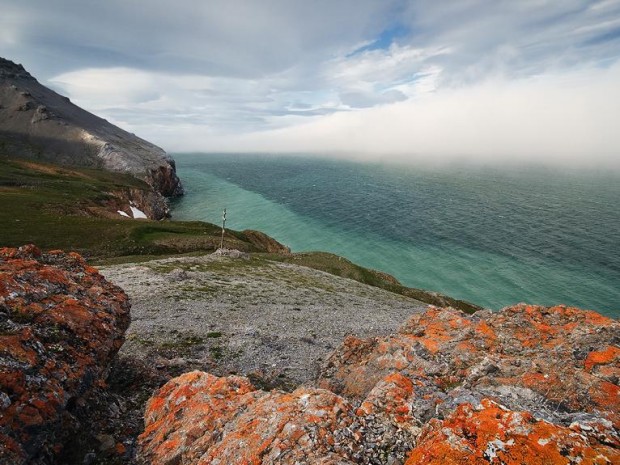
Chukchi Sea (33 ‰)
Another "our" sea. The salinity of the Chukchi Sea is 33 ‰, this is what allows it, as well as the White and other seas, not to freeze in severe frosts (up to -1.8 degrees). The sea stretches between Chukotka and Alaska. Here you can meet many species of fish, as well as walruses and seals.
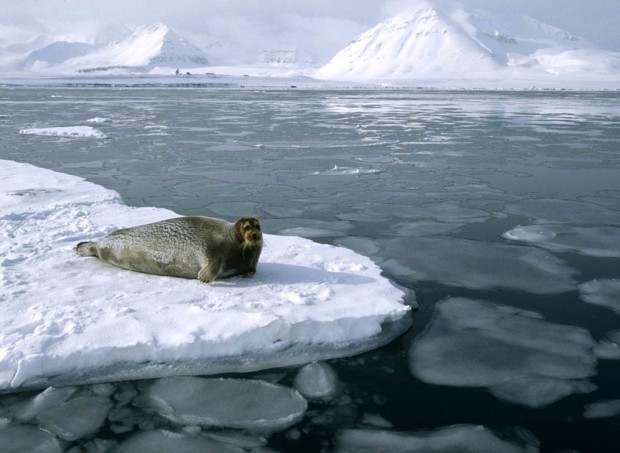
Laptev Sea (34 ‰)
Another sea washing our borders. The salinity of the Laptev Sea is slightly higher than that of the Chukchi Sea - 34 ‰. The reservoir stretches between Severnaya Zemlya and the New Siberian Islands. All year round, the sea water rarely warms up above zero. Here you can find such fish species as sturgeon and perch, and among animals - walruses.
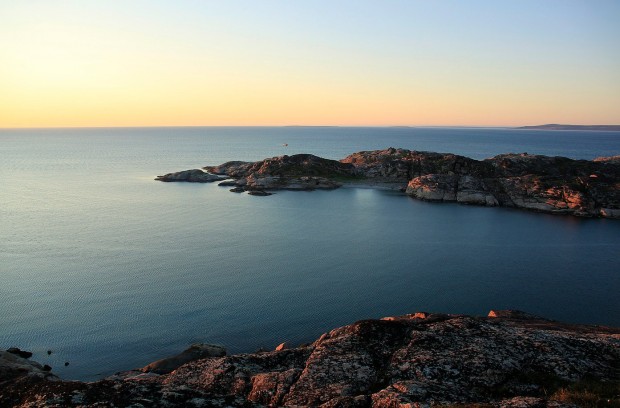
Barents Sea (35‰)
The next sea is again slightly saltier than the previous one - 35 ‰. Officially, this sea is recognized as the saltiest in Russia. In winter, the southwestern part of the reservoir freezes, the rest does not. Underwater world Barents Sea incredibly rich - here you can meet not only whales and killer whales, but also a great many different types fish: from herring to perch.
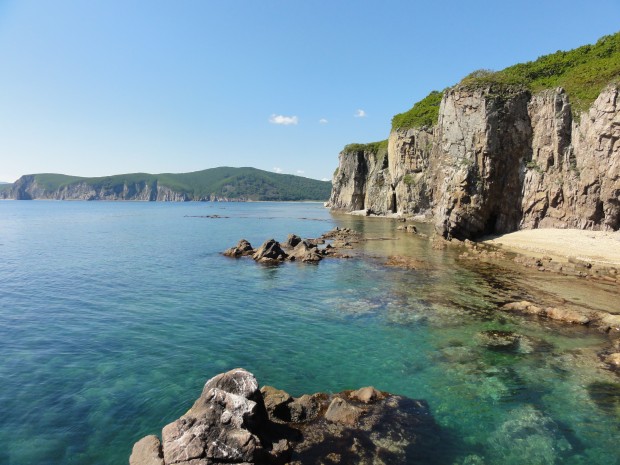
Sea of Japan (35‰)
This sea is not inferior in salinity to the Barents Sea. The Sea of Japan is partly washed by Sakhalin Island, as well as the islands of Japan and the coast of Eurasia. In the southern part, the sea warms up to 26 degrees Celsius, in connection with which it can even be called "resort". An incredible amount of living creatures live in the Sea of Japan: seafood and fish are simply not counted here.
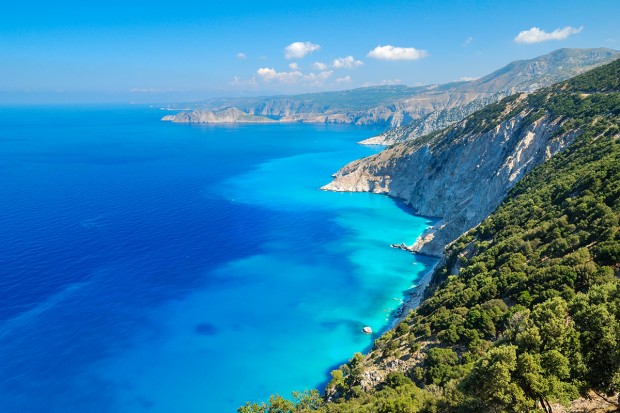
Ionian Sea (38‰)
One of the most picturesque and clean seas the world is also very salty. This sea is the densest and saltiest in Greece. Besides the picturesque underwater world The Ionian Sea boasts temperatures: summer time the water warms up to 26-28 degrees. The sea is very popular with tourists.
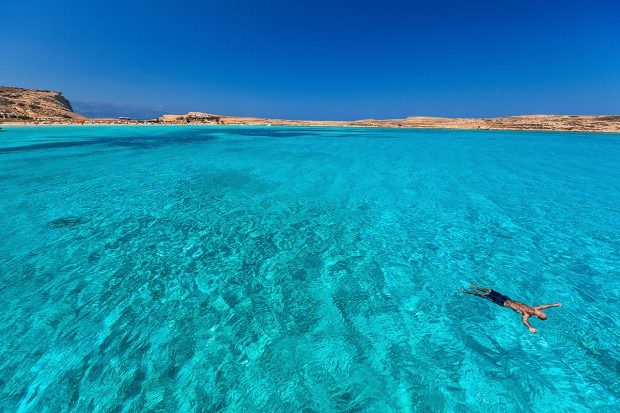
Aegean Sea (38.5 ‰)
Almost the same characteristics will apply to the Aegean Sea. Doctors advise to bathe in fresh water after swimming in this sea, because such a high concentration of sodium can negatively affect the skin. Greece and the Balkans bathe in this sea. A myriad of living things live in it, including octopuses, sponges and fish.

Mediterranean Sea (39.5 ‰)
The Mediterranean Sea stretching between Europe and Africa is very salty in places - 39.5 ‰. Off the coast, where tourists rest, such salinity is not observed, it is concentrated in other parts of the reservoir. The Mediterranean Sea is one of the most diverse in its fauna - 500 species of fish, hundreds of shellfish and a lot of seafood. And this is not the limit.
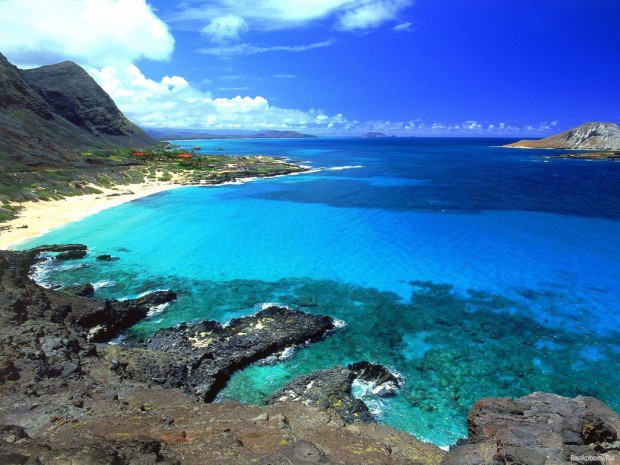
Red Sea (42‰)
Another border sea, but between Africa and Asia. The Red Sea is one of the saltiest in the world, but this does not interfere with its inhabitants - amazing corals, various fish, dolphins, molluscs and crustaceans. The water in the sea mixes all year round - in winter the upper layers cool down and sink to the bottom, and the warm ones rise up. By the way, the sea is incredibly clear.
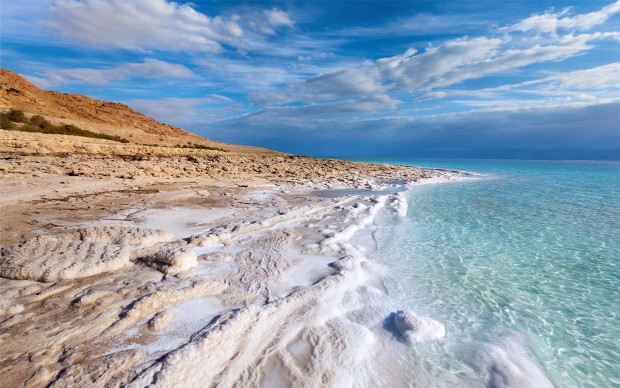
Dead Sea (270‰)
The absolute champion of our rating. Located on the border between Israel and Jordan, the Dead Sea is striking for its salinity - about 200 grams of salt per 1 liter of water (270 ‰). This sea in its own way chemical composition It is fundamentally different from everyone else on Earth: it consists of 50% magnesium chloride, and it also contains a lot of calcium, bromine, potassium and other mineral elements.
Kallium salts from water Dead sea crystallize artificially, and the density of the reservoir is so great that it is simply impossible to drown in it. Among other things, there is healing mud in the sea. Sometimes the sea water heats up to 40 degrees, which speeds up evaporation. And most importantly, there is no underwater world in the Dead Sea, with such salinity it will not work to live in it. Therefore, it is also Dead.




